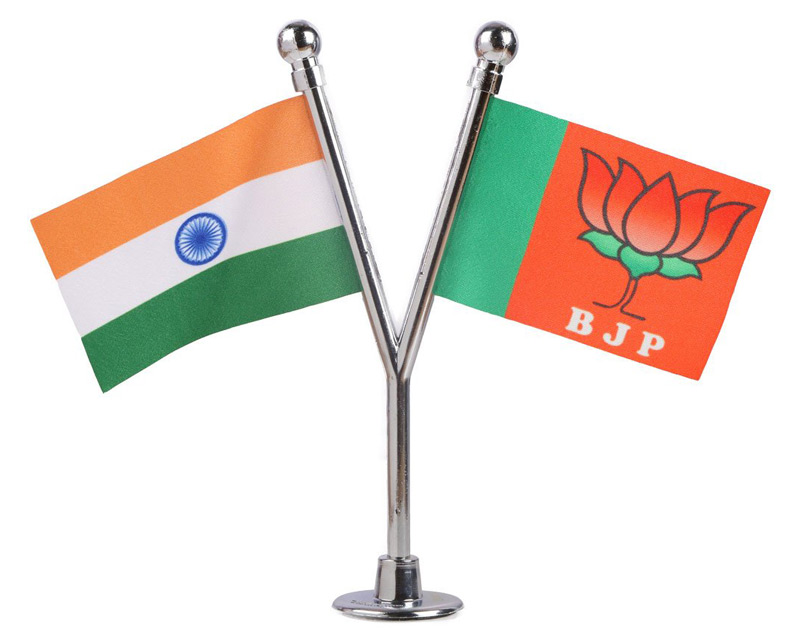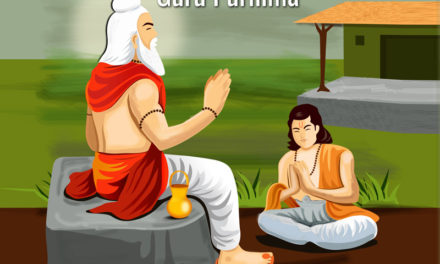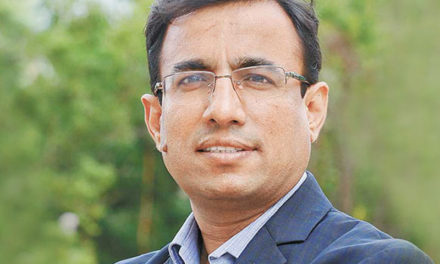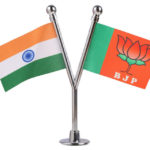Elections in Maharashtra, Rajasthan, and Haryana have been announced and focus has once again shifted to domestic politics after the news cycles focus on India’s coverage in US – starting with the visit of the Prime Minister, Howdy Modi event, UNGA address of Imran Khan, S Jaishankar’s engagement of think tanks and the Op Eds in NYT.
This is an opportune time to write the second part in my series of why BJP will continue to dominate the Indian polity for next 25 years.
The first part related to BJP’s sustained use of the ‘Giver energy” bank of its cadre, and a large section of populace in India and abroad who come forward to support BJP in a spirit of “giving” to the nation.
This is countered by the “taker” energy of opposition which is seen as corrupt, opportunistic and dynastic. Taker energy can win if it is backed by brute force and numbers. When “giver” energy is backed by numbers and force, the “taker” energy will and does lose always.
You can read the first part here https://www.myind.net/Home/viewArticle/how-the-bjp-rose-to-become-the-most-dominant-political-party-in-india-in-2019-part-1-bjp-and-rss
In the second part, I will deal with the famed “organisational” aspect of BJP and why that is one of the most critical reason why BJP will continue to dominate.
While everyone agrees that BJP’s organizational abilities are superior to that of the congress, the specifics of why and how it is superior have not been dwelt upon or understood well enough.
An organisation can be as small as a handful of people who come together for specific functions or events and survive for a limited period of time OR they can survive for years, decades and centuries.
Religious organizations like Church, or Hindu Peethas and Mathas have survived over several centuries.
Corporates and Academic organizations have survived and grown over decades (some over a century or two now).
Political parties are recent phenomenon since advent of democracy more than three centuries ago.
While an organisation can survive several decades and even centuries, continual growth of the organisation beyond mere survival requires some essential ingredients.
People often attribute the growth of an organisation and institution to individual leaders and their role can never be ignored. However, what makes the organisation go beyond individuals is the clarity of principles, its adherence to them, the right structure, the ability of the organisation to reinvent itself, nurture and enable the growth of leadership both in times of success and adversity.
On all these counts, BJP as a political party stands head and shoulders above all the parties, not only in India but also compared to any other party in any other country in the world.
There are 3 critical factors which distinguish BJP from any other political party – call it the triple S factor – Scale, Succession and Structure
- SCALE
In terms of Scale, BJP is not only the largest party in India, it is the largest political party in the world, not just today but at any time in the history of the democratic world including Indian national Congress at its peak.
Its official membership number is over 180 Million, twice that of the Communist Party of China which is the second largest party and whose membership is over 90Mn as of 2019 statistics. Democrats come in as the third largest at less than 45Mn and Republicans as fourth largest at less than 33 Mn.
Indian National Congress membership is 20Mn, one ninth of BJP.
If BJP were a country, it would be the 8th largest country in world, larger in population than countries like Russia, Japan, Germany, UK, France, Egypt, Philippines and Mexico.
In terms of age, it is not a very old party. It first came into existence as Bharatiya Jan Sangh, founded in 1951. This was merged into Janata Party in 1977 when all parties came together to create a common party to fight Congress and emergency. In 1980 when the Janata Party split, the members of erstwhile BJS were asked to renounce their loyalty to RSS, they regrouped as BJP.
In terms of age, BJP is younger compared to the Communist party China which is 98 years old, Republican party which is 165 years old and Democratic party which is 191 years old. Indian National Congress is 133 years old. The youngest party amongst the top 5 parties in the world is the largest in terms of numbers.
- SUCCESSION
While scale is an important part, this can be an asset only if the mass of scale is accorded the right leadership.
It is not just about who leads the party at the top. It is about the approach to how the leadership is nurtured and grown over the years as it rises from ranks, and how the party deals with vexing issue of succession planning.
While Amit Shah heads the party today and is the most successful president of the party by any parameter, the past presidents includes stalwarts like Shyamaprasad Mukherjee, Deendayal Upadhyaya, AtalBihari Vajpayee, Lal Krishna Advani, and in more recent times successful leaders like Rajnath Singh and Nitin Gadkari. The president is the #1 leader, and most visible face, but the way the leadership is nurtured and grown from grassroots and way responsibility accountability and power is distributed and managed, it is a complex mix which evolves and is perfected with time.
Succession management at the top, in troubled times, and choosing leadership to steer the organisation at critical junctures is the benchmark for an organisation’s approach to leadership management.
BJP’s approach to leadership and succession management can be gauged by its deft handling of transition to top posts at critical junctures.
When in 2013, Narendra Modi was nominated as the prime ministerial candidate in BJP’s Goa “adhiveshan”, LK Advani was explicit in his displeasure. His proteges like Sushma Swaraj and RS Prasad did not attend the meet either giving excuses. However, Rajnath Singh as the party president, and Mohan Bhagwat as Sarsanghchalak were firm in their resolve and managed the transition of the leadership to Narendra Modi in spite of opposition by veterans like Advani, Joshi and NDA partners like Nitish Kumar.
The results of that successful transition are visible to all.
Similarly, when Nitin Gadkari was mired in controversies, the baton was quickly passed over to Rajnath Singh. When Rajnath Singh became the home minister in Modi’s cabinet, it was smoothly passed to Amit Shah.
There were no murmurs of protest or resignations, no endless delay and agonizing over the choices.
While Amit Shah is the without doubt the most successful president of the party, when his term expired in 2019, he took over as Home Minister, JP Nadda was appointed as the working president while Amit shah continued to play a key role as the overall head.
There was no fuss, no controversy, no press statements from anybody.
Contrast this with succession management in Congress party when Rahul Gandhi resigned and party endlessly debated over who will take over begging him to stay and finally settling for Sonia Gandhi.
Also contrast this with the succession issues in parties like Samajwadi Party where Akhilesh Yadav took over control against Mulayam Singh and his uncle or succession wars which broke out in ADMK after Jayalalitha’s demise.
In leadership succession at the top, BJP has scored over not just political parties in India but even reputed corporates like Infosys and Tatas.
The struggle at the top with Cyrus Mistry who was handpicked by Ratan Tata or with choice of CEO at Infosys where Narayan Murthy publicly hounded Vishal Sikka over his handling of the company are well known to merit a discussion here.
BJP’s track record in succession management in appointing Chief Ministers has also been better than any other rivals. It has defied conventional norms of dynastic preference (Menaka Gandhi wanted Varun Gandhi appointed as CM of UP), or Caste preferences (Maratha as CM of Maharashtra or Jat as CM of Haryana), or politicians (choosing Pracharaks over politicians as in Gujarat, Uttarakhand or Haryana).
BJP’s track record of appointments in choosing Indian president (Kalam or Kovind), or state Governors (Kiran Bedi or Arif Muhammad Khan) has also been pragmatic and shows thoughtfulness and wisdom often lacking in other parties.
- STRUCTURE
The third and the most important parameter is the overall Structure of the organisation and the architecture. If I were to borrow a term from the world of technology, BJP and Sangh parivar have perfected a 3-tier architecture which does not seem to have a parallel with any other political party in the world.
It has a foundational layer of RSS which is the largest volunteer organisation in the world (the only one larger than it can be Church but it being controlled by Vatican which is a country by itself cannot be strictly called a volunteer organisation). Sangh thrived on volunteership and grown in the most adverse circumstances. It has had burgeoning membership and has always had a clear leadership at the top with a “Sarsanghchalak” at the helm of affairs.
This layer provides the ideological moorings and the critical volume of grassroot workers play crucial role during elections and serve as eyes and ears of the party.
The second layer obviously is the party itself which has a huge membership as explained earlier- a clear structure of officer bearers with plans afoot to have offices in 635 districts out of the 694 districts in the country.
Like RSS, BJP too has its own president who is in charge of affairs with a proven succession approach as explained earlier.
The third layer is the governance layer which draws largely from the party but also borrows occasionally from outside like S Jaishankar from diplomatic services or Gen VK Singh from Army, S P Singh a former IPS officer and RK Singh a retired IAS officer. It is led by a leader who is the prime minister who focuses only on governance while party affairs are handled by party president and functionaries. In states we have chief ministers who work with state presidents who have their own domains and are in charge of party growth in the state. The party benefits from the good decisions of the government and is impacted by the bad decisions.
The separation of duties of ideological and grassroot work, party growth and party elections, and governance at state and central level allows for the growth of the party at full speed. The people who are focused on party growth do not have to worry about governance and vice versa.
This separation of duties and responsibilities also allows a natural balance of power as success in duties to party leads to position of power in governance. The Sangh parivar has always had roles like “Sangathan Mantris” – who were on loan from RSS and who will focus on party work and never take part in power structures in governance. Narendra Modi himself came from RSS and Vajpayee deputed him to Gujarat when Keshubhai Patel was struggling as Chief Minister.
In contrast, in all other parties, whenever they are in power, the party leadership and governance leadership are both managed by the same person and the party leadership focuses on party affairs only when they are out of power.
In all state parties be it NC, PDP, ADMK, DMK, TDP, YSRCP, TRS, BSP, SP, JD(U), AAP, HVP, Shiv Sena, TMC, BJD, and JDS the leadership of party and leadership of government (when the party is in power) power wrests in one person or with dynasty.
The sharing of power is not configured as part of the structure, is neither democratic nor balanced with a focus on party growth.
In matters of scale, succession and structure, the party has evolved these 3 pillars over the last 68 years of its history.
It takes years and sometimes decades to build the kind of culture and discipline which will bring the succession management and structure mentioned earlier.
If we compare with any other party, it seems very unlikely that they can match BJP in its scale in near future. Clearly, we do not see any party coming close to BJP in any of these parameters, it is unlikely that the dominance of BJP will be challenged by another party.











